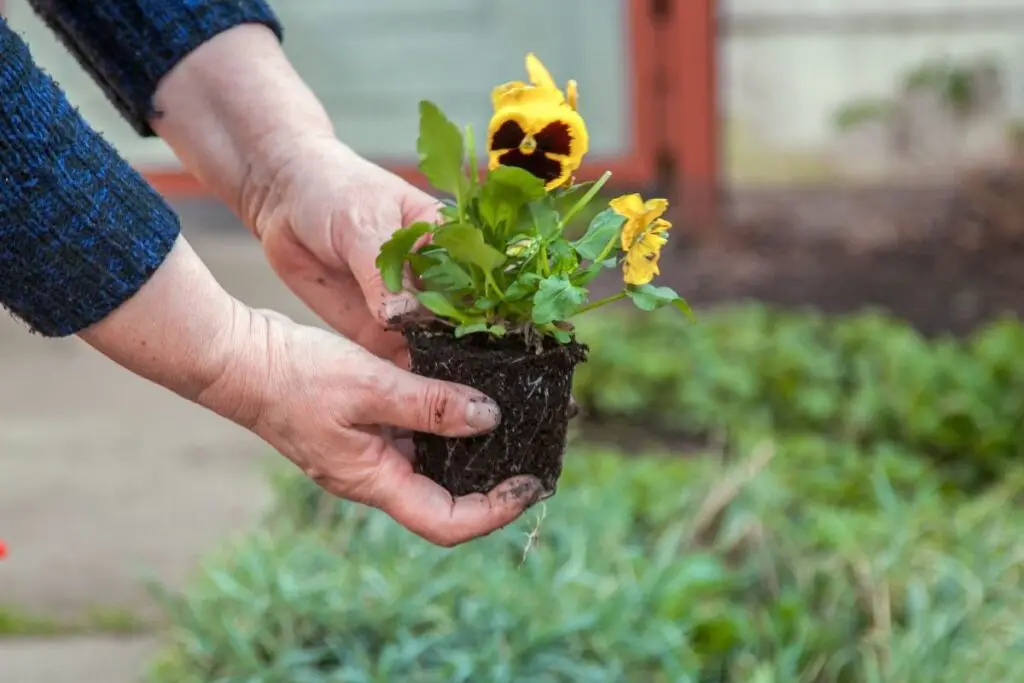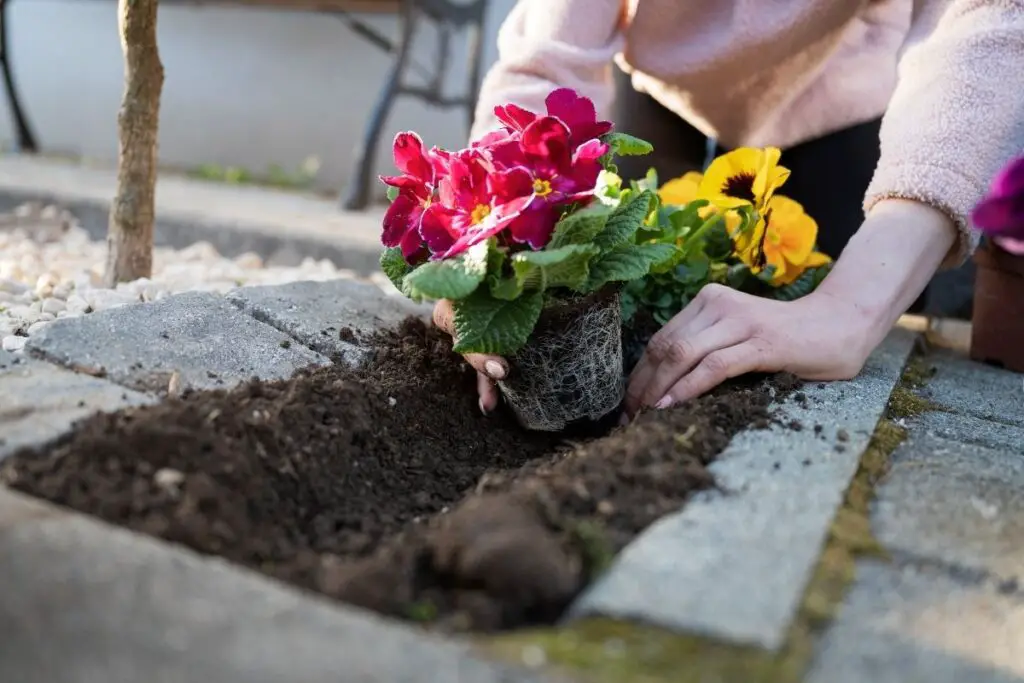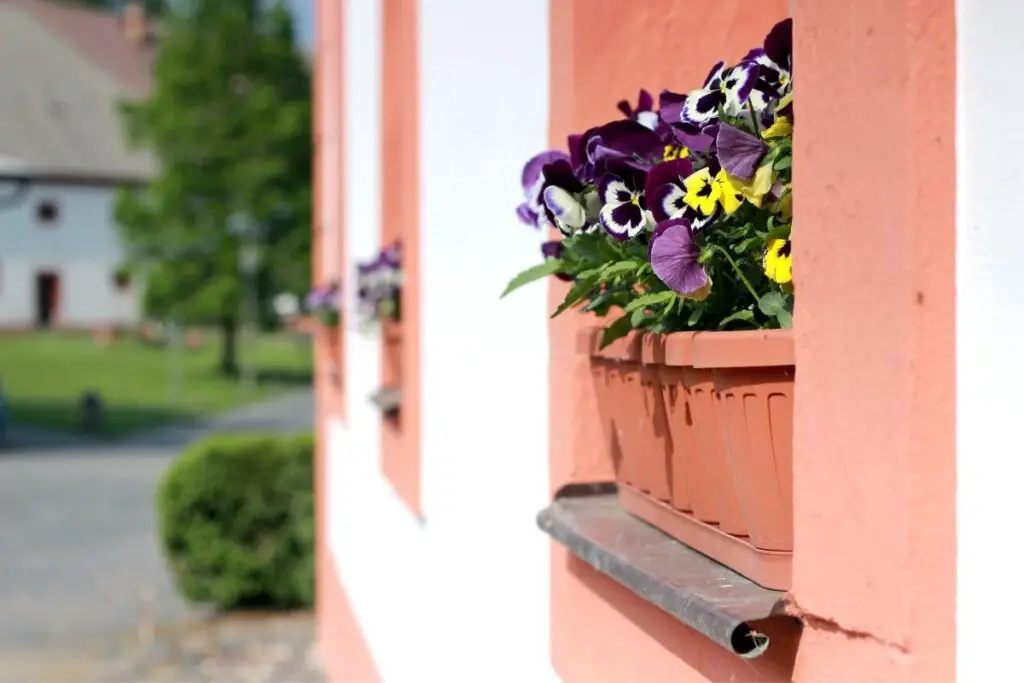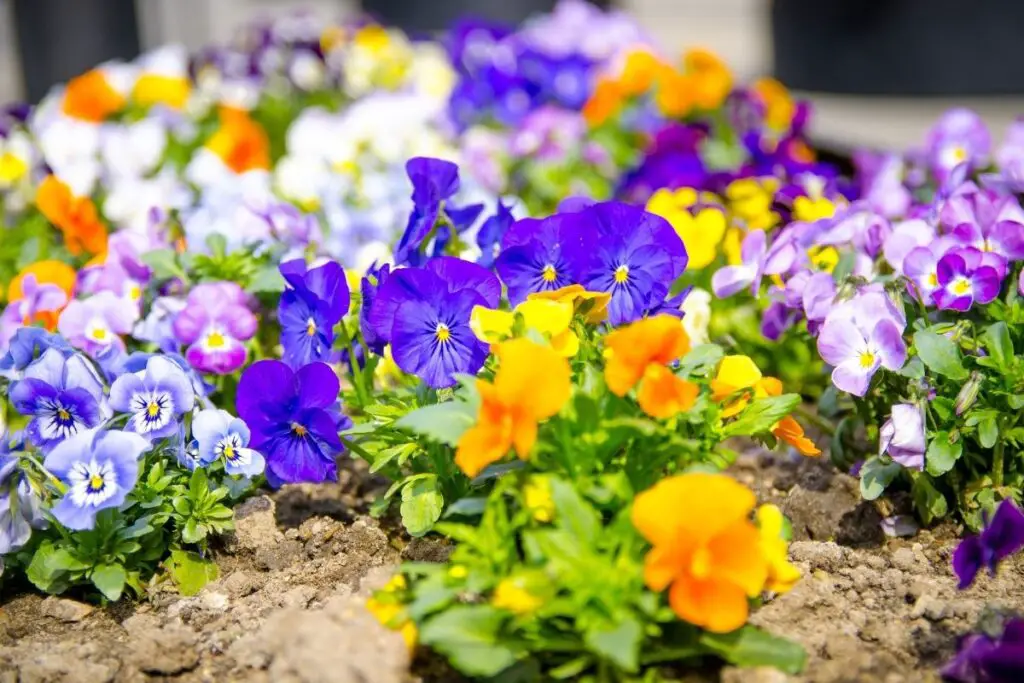Pansies are popular flowers grown in every garden. They vary in colors and species. Cultivating them is not hard at all. But if you want to have a healthy and beautiful pansy, the first thing you need to do is decide their planting placement. So, in this article, we shall learn where to plant pansies.
As a general rule, pansies should be planted on the east-facing side of your garden. This ensures that your pansies get plenty of morning sun but are shielded away from the intense afternoon rays. If you are planting them in another direction, make sure they have partial shade during midday.
Placement is an essential factor when you are growing pansies outdoors. You cannot just start growing them anywhere in your garden.
When you grow them in your garden, they are no longer in their natural habitat. So you need to provide them with all their essential needs for their healthy growth.
Pansies need six hours of sunlight regularly. They grow well under partial to full sun. But they cannot tolerate too much heat.
Also, pansies do not like excessive moist soil. But at the same time, they also do not like dry soil too much.
So, before planting pansies in your garden, you need to pay attention to these factors and then choose the correct place for planting pansies.
In today’s article, we will discuss the ideal places for planting pansies. We will also talk about the common factors needed for the healthy growth of pansies.

Are pansies annuals or perennials?
Pansies are treated as annuals and sometimes perennials. But this is a common question in every gardener’s mind.
When pansies are in their natural state, they are called biennials. They grow leaves in the first year, flowers in the second year, and then wilt thereafter. They cannot tolerate harsh weather.
When you buy them as flowers from any nursery, they must be treated as annuals. When you have pansies that are constantly growing after trimming, they are re-seeding, and so they are called perennials.
Sometimes, people get confused. I mentioned this point because there is no specific differentiation of pansies into biennials, annuals, or perennials. They are named like this depending on the region where they are grown and the variety being selected or brought for growing.
The region that you are living in is an important factor for growing the pansies.
Your area must possess an atmosphere that is favorable for the growth of pansies. After that comes the various factors that determine which place of your garden you must plant them.
Factors determining the placement of pansies
You should plant pansies in such a position where it gets all their requirements from nature. First, you need to select a suitable spot for planting them.
You need to consider some factors before you plant your pansies or select a place for them. After that, you will need to keep checking the reaction of your plants to understand whether your plant is growing healthy or not.

Light
Light is a critical factor for pansies as they are sun-loving flowers. They enjoy six hours of sunlight daily for their healthy growth.
If they don’t receive enough sunlight, they will become tall and leggy because they will constantly stretch themselves towards the sun for adequate light.
But too much light might increase the heat and make the pansies leggy and weak.
Also read: How Much Sun Do Pansies Need? (Pansies Light Requirements)
Looking for gardening supplies? We have tested 100's of products before recommending them to you guys. Check out our best pick below:
| Image | Gardening Supplies | Best Price? |
|---|---|---|
 Top
Top Top
Top | Raised Garden Bed Kit | Check On Amazon |
 | XLUX Soil Moisture Meter, Plant Water Monitor, Soil Hygrometer Sensor for Gardening, Farming, Indoor and Outdoor Plants, No Batteries Required | No Results |
 Top
Top Top
Top | 82 Pcs Garden Tools Set and Extra Succulent Tools Set | Check On Amazon |
 | Joeys Garden Expandable Garden Hose with 8 Function Hose Nozzle, Lightweight Anti-Kink Flexible Garden Hoses, Extra Strength Fabric with Double Latex Core, (50 FT, Black) | No Results |
 Top
Top Top
Top | Dual Chamber Compost Tumbler | Check On Amazon |
 Top
Top Top
Top | Sunnyglade Plant Stakes | Check On Amazon |
 Top
Top Top
Top | Organic Cold Pressed Neem Seed Oil | Check On Amazon |
 Top
Top Top
Top | Mighty Mint Gallon :-Insect and Pest Control Peppermint Oil | Check On Amazon |
 Top
Top Top
Top | Scotts DiseaseEx Lawn Fungicide | Check On Amazon |
 Top
Top Top
Top | Jacks Classic 20-20-20 All Purpose Fertilizer | Check On Amazon |
 Top
Top Top
Top | 30,000 Seeds Pollinator Attracting Wildflower Mixture | Check On Amazon |
 Top
Top Top
Top | Survival Vegetable Seeds Garden Kit-Over 16,000 Seeds | Check On Amazon |
Temperature and humidity
Before planting the pansies outdoors, you need to know about the temperature and humidity. Pansies hold an incredible ability to survive during winters.
But, pansies do not like extremely high temperatures and humidity. Too much heat and humidity cause harm to the pansies. Extreme high temperatures and humidity lead to weak and tired pansies and no flower growth.
Even if some hardy pansies can tolerate high temperatures, that won’t be more than 21°C.
We don’t have any control over the outdoor weather condition.
So it would help if you plant the pansies when the temperature outside seems feasible for growing pansies. The best time to grow pansies is cool springs and fall months.
Soil
Before planting the pansies, check the condition of the soil of that particular place. Pansies prefer rich loam soil.
They do not enjoy extremely dry or moist soil. They need well-drained fertile soil, which is high in organic matter for their healthy growth.
Soil temperature between 7°C-18°C is ideal for the growth of pansies.
Also read: What Type Of Soil Is Best For Growing Pansies? (+Best Soil Mix)
Where to plant the pansies?
Pansies grow well during the warm days and the cold nights of the spring season and fall months. But, when summer arrives, the temperature rises, and the nights become warmer. That is when the pansies find it challenging to survive and might even die.
So, to protect your pansies and keep them blooming, you need to keep certain things in mind while planting them.
Create a well-draining soil bed
Pansies enjoy rich loam soil that is fertile and contains enough organic matter. They like moist and well-draining soil.
Make a soil bed that can drain enough water and holds adequate moisture needed for the better growth of pansies. You can improve the quality of the soil by adding compost or earthworms to the soil. This will improve the drainage system of the soil.
Well-draining soil will help avoid overwatering in the pansies. If the soil fails to drain excess water, then that might lead to root rot. Root rot and overwatering will also invite pest and fungal infections.
To avoid such problems, the soil bed of your pansies must contain a sound drainage system.
A light and well-draining soil will also provide air circulation. This will help the roots of the pansies to breathe well, but if the soil is not aerated, that might suffocate the roots of the pansy plants. Good ventilation will let the roots breathe well and spread flexibly.
Provide adequate sunlight

The next important thing while selecting the position of planting pansies is light.
Pansies need six hours of sunlight daily. They are sun-loving plants that grow best in partial to full sunlight. But they need cool temperatures to survive.
Select a spot where they will receive at least six hours of sunlight daily. Also, ensure that the site can protect your pansies from the intense rays of the sun during the afternoons.
Do not plant the pansies under extreme shady places. If your pansies fail to receive enough light, then they will constantly be stretching themselves towards the sunlight, and that will result in leggy and tall pansies with no flower growth.
During summer, you can give them semi-shade to protect them from the sun’s harsh rays by putting some big potted plants beside them.
Understand the direction of the sun while choosing the place of planting
It is also important to understand which side of your garden will get morning sunlight, which is vital for pansies, and which side will receive the harsh afternoon rays, which on the other hand, is harmful to the pansies. After that, then you can select the position of planting the pansies.
Keep gaps in between the pansy plants
Whenever and wherever you are planting pansies, you need to check the space between each of the plants.
If you want to merge them with other plants or grow many pansies together in a separate soil bed, make sure that they have enough space between them.
Pansies grow up to six to nine inches long and spread about nine to twelve inches. Keep space of about seven to twelve inches between every plant.
Keeping a good amount of space in between the plants will encourage good air circulation for the plant. If the plant does not get enough airflow, that will keep the plant damp, further inviting pest infestation and fungal infections.
Check the surrounding environment
Before selecting the place for planting the pansies, you should check the surroundings. Do not plant your pansies if big trees or walls are surrounding the place.
These might overshadow the pansies and block the sunlight from reaching the plants. This will be an issue of low light level for pansies, resulting in leggy, tired, and weak pansies. The plant won’t be producing any flowers too in such conditions.
During summers, you can create shade, for example, big pots or potted plants, to protect your plant from the extreme heat of the sun later on, as per requirement.
But the presence of shades like big trees or walls beforehand might block the plants from receiving the light that pansies need.
So, check the surrounding atmosphere before planting pansies, and then choose the perfect site for your pansies.
Taking care of pansies in your garden

In whichever place you are planting your pansies and growing them, you need to give them proper care, or else they will disappoint you.
Water your pansies well. Water them according to the weather conditions. If the weather is wet, water them less. If the weather condition is extremely dry, water your pansies frequently. Do not overwater as that might invite other problems.
Wherever you place your pansies, check that they are receiving enough sunlight needed for their growth. Also, ensure that they are not getting blocked from the rays of the sun.
Fertilize them well. Using a balanced fertilizer will work well for them. Avoid using fertilizers containing a high source of nitrogen.
Keep removing the spent flowers and deadheading. Pansies remain outside all the time. Sometimes they might receive the sun too much, resulting in leggy pansies. Deadheading will keep them going well.
Final words
Pansies need six hours of direct sunlight for healthy growth. But they do not enjoy extremely high temperatures or humidity. So keep these in mind while choosing a planting site for your pansies.
Protect them from the intense rays of the sun during the afternoon of summers. Fertilize as per schedule during the growing month of pansies to boost the growth of the pansies.
The soil must retain adequate moisture needed for the plant to absorb the essential nutrients from the roots.
The surrounding atmosphere should be such that the pansies can receive enough sunlight throughout the day and partial sun during the afternoons. Check that no obstacles are blocking the sunlight from reaching the flower bed around the planting place.
Keep a regular watch on your pansies and observe their reactions. If they are responding well, it means that the planting site has been suitable for your pansies. If not, you will need to make some changes for them, encouraging them to grow well.
Ref: The University of Arkansas, Britannica, Utah State University, Wikipedia, The University of Georgia, The Pennsylvania State University, The Royal Horticultural Society.
